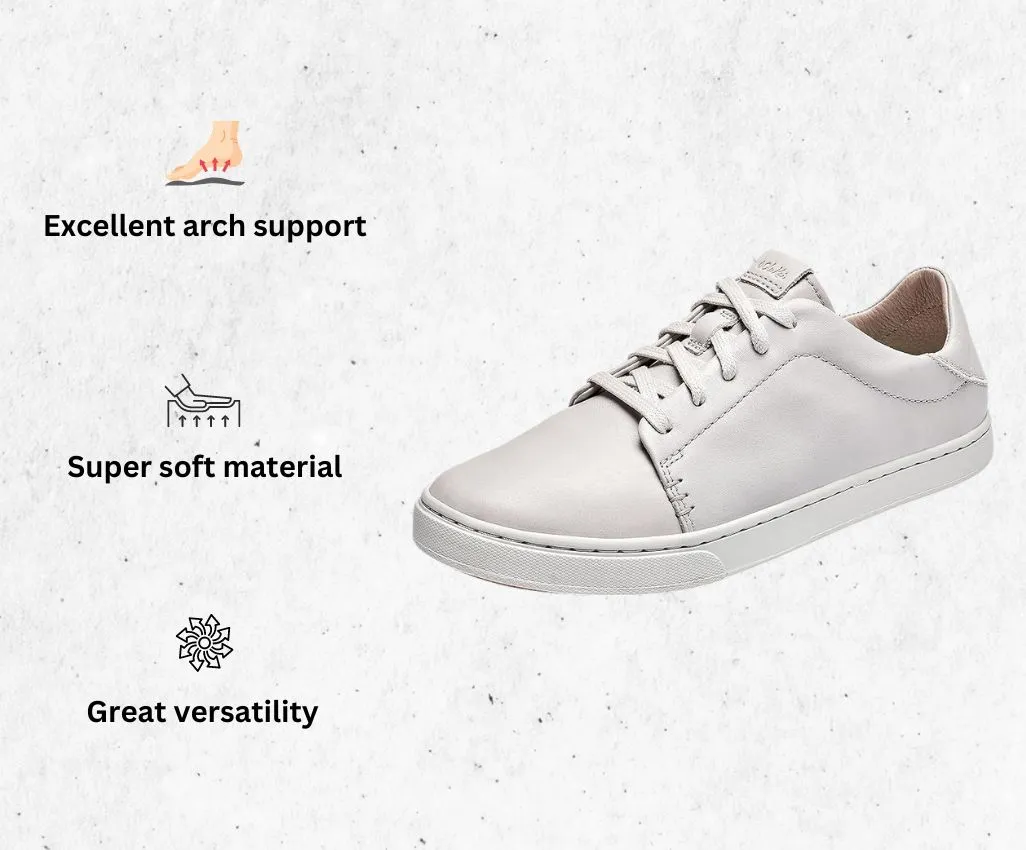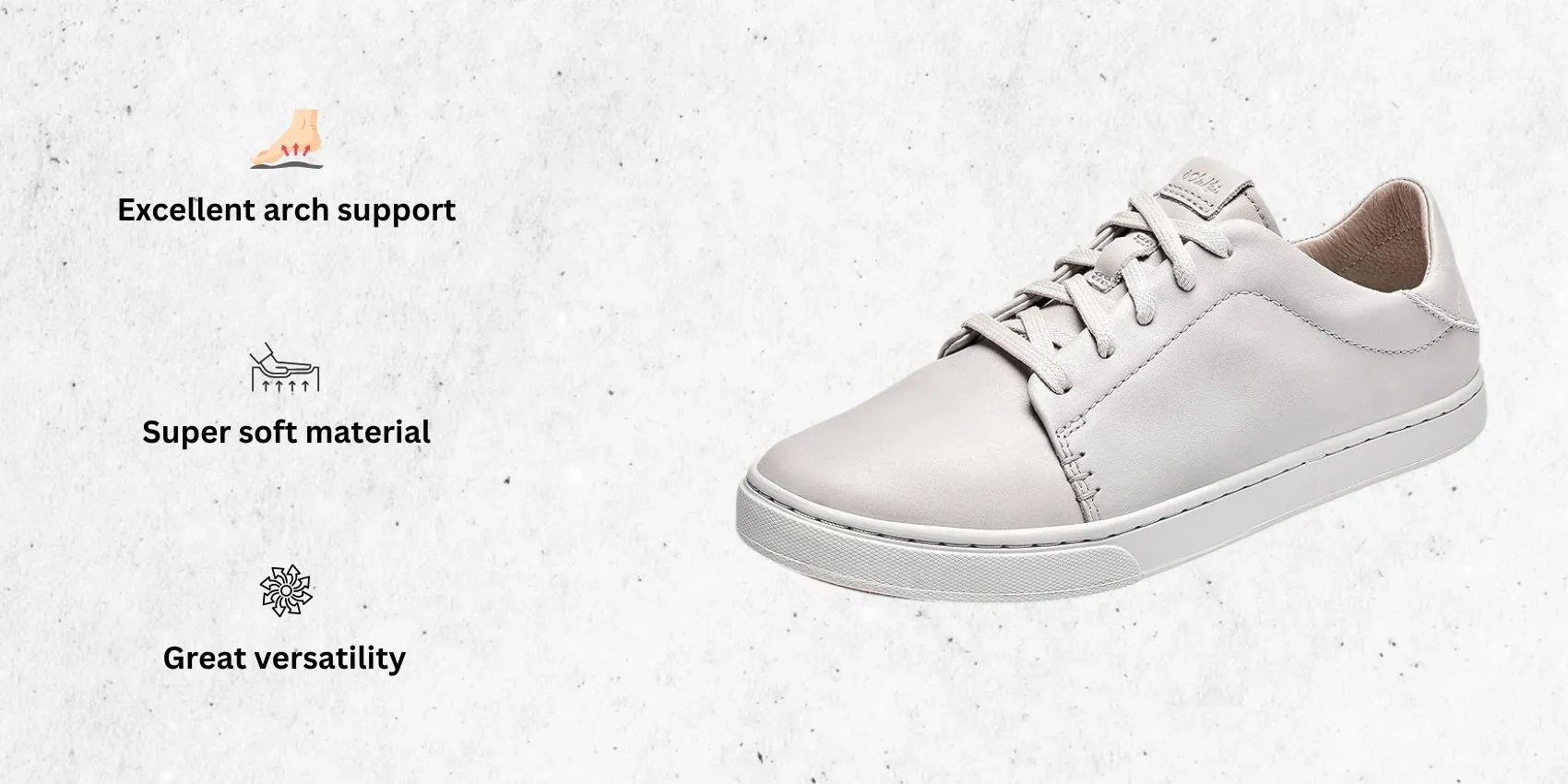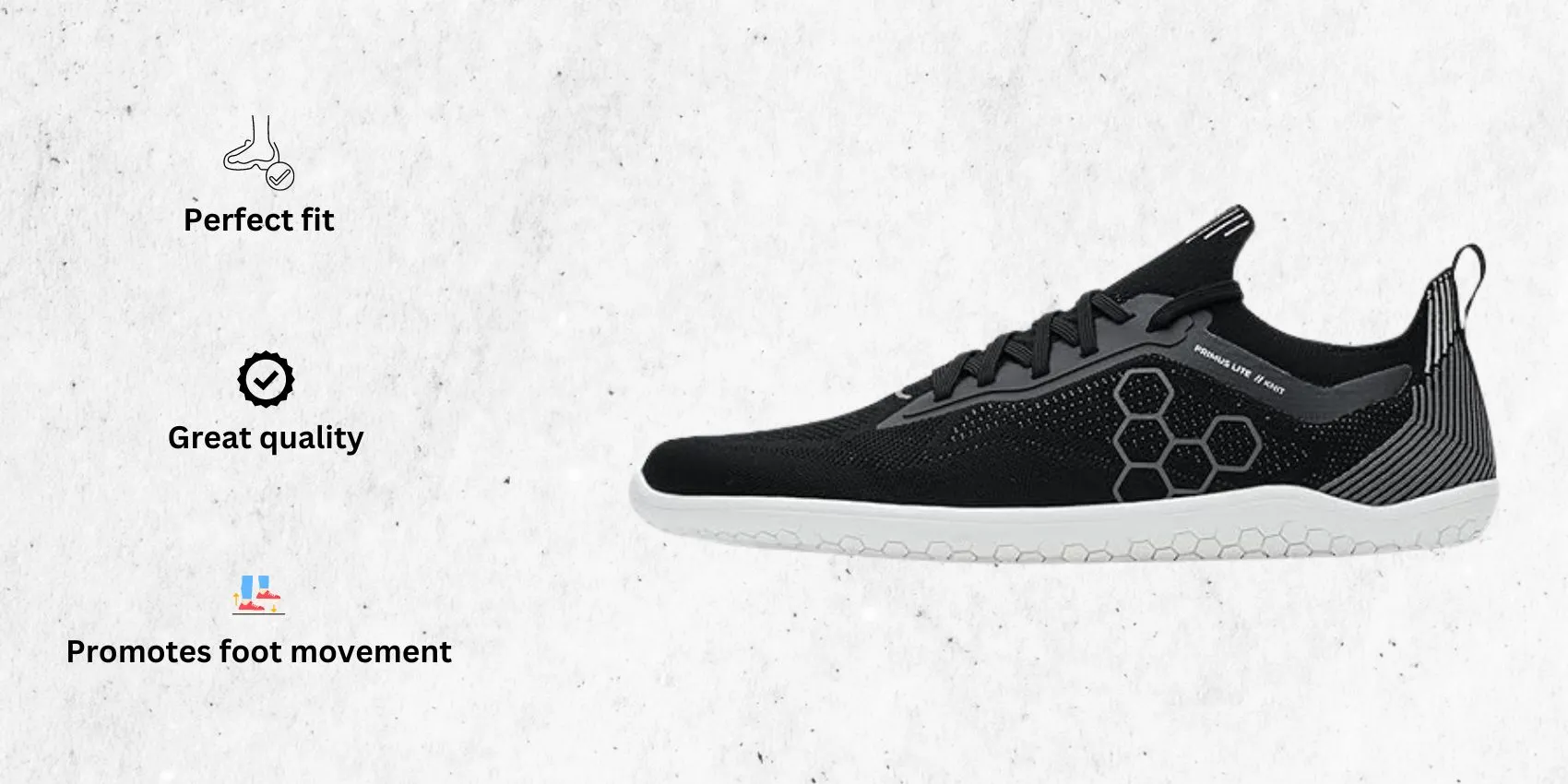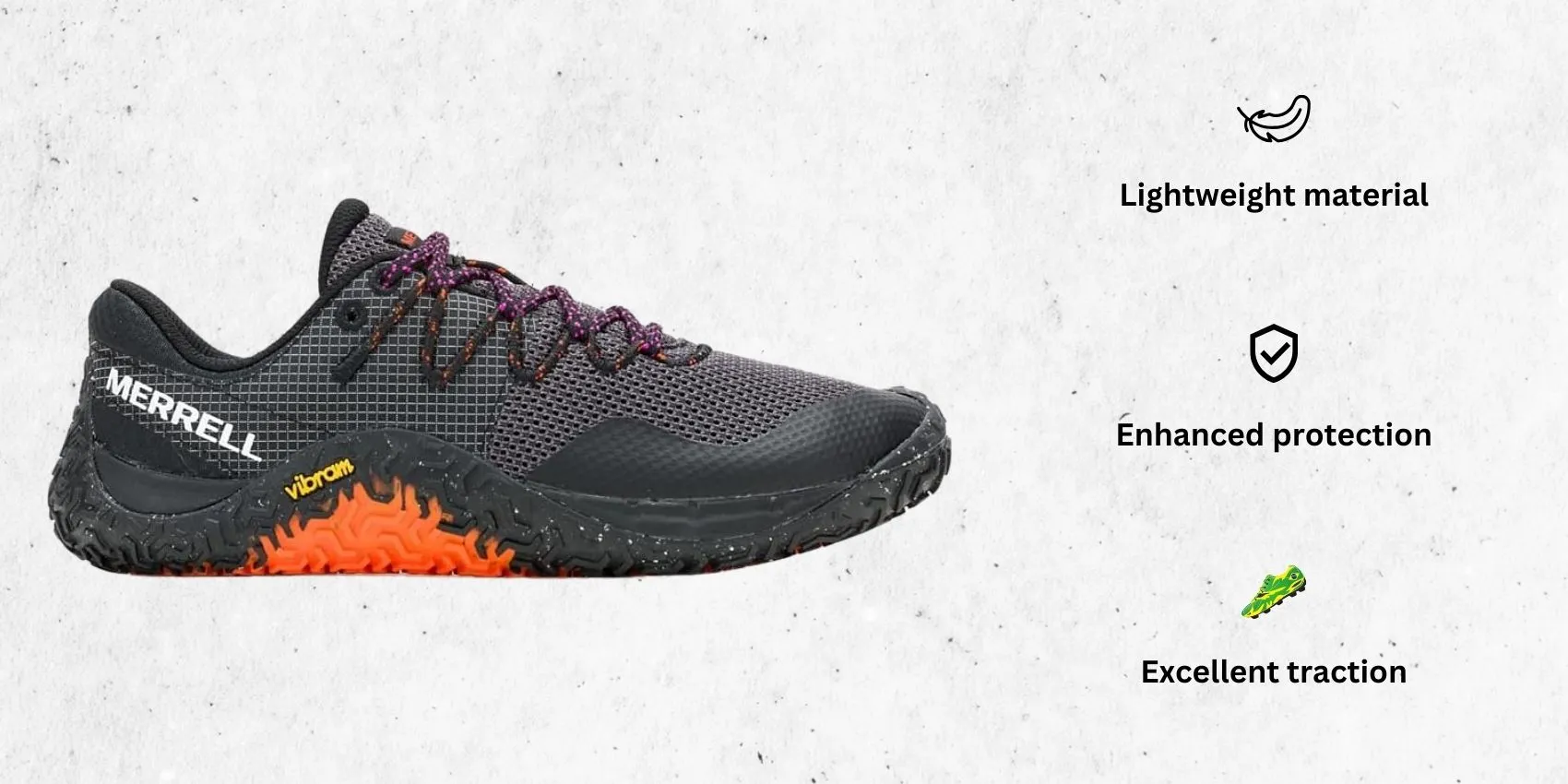11 Best Barefoot Running Shoes For Women (Runner’s Tested)
Barefoot running enhances foot strength, improve balance, and promote a more natural running gait, which can reduce the risk of injury. Finding the right running shoes can be a game-changer, especially for those who prefer the minimalist feel of barefoot running.
Selecting the perfect pair involves avoiding possible strain, injury, and comfort. To help you make the best decision, we’ve put together a list of the 11 best barefoot running shoes for women.
Trust in our selections that comes from a deep understanding of what runners truly need. We base our suggestions on in-depth research and personal experience. They guarantee that every barefoot woman’s running shoes provides the stability and flexibility your feet need for every run.
Quick Picks: Best Barefoot Running Shoes For Women
- Best Overall: Vivobarefoot Primus Lite III due to its eco-friendly materials and superior ground feel for gym training.
- Best Budget Option: Vibram Women’s FiveFingers CVT Hemp Minimalist Casual Walking Shoes for their affordable price and eco-friendly, versatile design.
- Runner Up: Xero Shoes Women’s Prio Original Barefoot Cross Trainer for exceptional ground feedback and versatility in various physical activities.
1. Vivobarefoot Primus Lite III – Best Overall
With a 2mm performance Primus outsole for close ground contact and a breathable, flexible top, the Vivobarefoot Primus Lite III is perfect for running in minimalist shoes. These shoes provide the best barefoot training experience.
The vegan construction uses PU foam insoles made from 98% recycled materials and strong rubber for durability.
Though they’re not the best for long-distance running, these trail running shoes work well in gym environments. They provide enough room for toe splay and promoting natural foot motions.
Related Article: “Long Distance Running Vs Sprinting (7 In-Depth Comparisons)”
Customers appreciate the natural feel and lightweight design, perfect for workouts and race. Although some say the mesh top makes it easy for dirt to get in, and the fit might be too big.
Pros
- Ultra-lightweight and flexible.
- Environmentally conscious materials.
- Spacious toe box.
Cons
- Mesh upper can allow dirt inside.
2. Xero Shoes Women’s Prio Original Barefoot Cross Trainer – Best for Ground Feedback
The Women’s Xero Shoes Prio Original Barefoot Cross Trainer features a 5.5mm FeelTrue® rubber sole and an optional 3mm insole. These road running shoes provide a ‘just-right’ mix of protection and ground input.
Related Article: “9 Best Running Shoes For Concrete (Runners Recommendations)”
These shoes are secure and lightweight, featuring a vegan-friendly structure. Its heel inspired by a Huarache sandal to improve fit and range of motion.
Customers praised the shoe’s large toe area, lightweight construction. They also appreciated its comfort and adaptability for various sports, from jogging to working out at the gym.
However, some users note size variations and possible durability issues, particularly with the stack height wearing out sooner than expected.
Pros
- Excellent ground feedback.
- Customizable insole.
- Lightweight and comfortable design.
Cons
- Questions about durability and sole wear.
3. Xero Shoes HFS Women’s Running Shoes – Best for Versatile Activities
The Women’s Xero Shoes HFS include a flexible “37.5” moisture-wicking inner. They also feature a lightweight, breathable mesh top, ideal for those looking to strengthen your feet.
Its XERO-drop design promotes natural foot mobility and enhances fit. It functions with its tire tread-inspired sole and adjustable straps reminiscent of the Huarache. Materials that are suitable for vegans complete the meticulous design.
These women running shoes are adaptable for road jogging, weight training, or casual attire. The roomy broad toe box improves comfort and balance, which is important for those with certain alignment requirements.
However, the size is not constant for some consumers, which deviates from the expected degree of comfort.
Pros
- Outstanding balance and comfort.
- Breathable and lightweight design.
- Adaptable to a range of tasks.
Cons
- Variations in size.
4. Vibram Women’s FiveFingers CVT Hemp Minimalist Casual Walking Shoe – Best Budget Option
The eco-friendly materials and simple design of the Vibram Women’s FiveFingers CVT Hemp Shoes combine to create a breathable, long-lasting hemp/poly mix. These running shoes are ideal for casual use.
Its ability to change from a shoe to a clog increases flexibility. And the slip-on design is great for those who want to improve your running with ease.
Practically speaking, those who want to feel barefoot will like the shoe’s comfort and light construction. But others find the fit tight and lack flexibility, especially around the instep. Although the variation in shoe sizes might be a barrier, customers are in love with its overall quality.
Pros
- Eco-friendly and breathable material.
- Versatile slip-on design.
- Durable construction.
Cons
- Inconsistent sizing and fit issues.
5. Merrell Womens Vapor Glove 4 Cross Trainer – Best for Indoor Workouts
The zero-drop structure of the Merrell Women’s Vapor Glove 4 Cross Trainer provides a natural stride. They are the perfect speed force shoe for running barefoot.
The high-performance Vibram sole of this vegan-friendly shoe is renowned for its sturdiness and slip resistance. Striving for the least possible environmental damage, it prioritizes sustainability.
Customers find that the Vapor Glove 4’s superior traction perfect for indoor exercises like weightlifting. But it’s not as good for long walks or rugged terrain because of the lack of padding. Moreover, some customers report inconsistent sizes, so it’s best to try on before buying.
Pros
- Ultra-lightweight and compact.
- Excellent grip and stability.
- Environmentally conscious design.
Cons
- Inconsistent sizing and fit issues.
6. WHITIN Women’s Wide High-Top Canvas Barefoot Sneakers – Best for Natural Foot Mobility
The zero-drop, broad foot-shaped structure of the WHITIN Women’s broad High-Top Canvas Barefoot Sneakers encourages natural foot mobility and posture.
Related Article: “Can Running Increase Height? (7 Useful Ways To Achieve It!)”
These comfortable high-top sneakers with a traditional canvas upper and cushioned collar combine elegance and comfort.
These barefoot running shoes for women are appropriate for everyday use and light exercise. They provide significant comfort and style.
However, users note that the shoe’s bottoms may wear out rapidly after prolonged usage. And that the sizing might vary, which may indicate that going up a size is necessary for the best fit.
Pros
- Comfortable foot-shaped design.
- Lightweight and stylish high-top canvas.
- Flexible and promotes natural movement.
Cons
- Sole durability is questionable with heavy use.
7. OLUKAI Pehuea Li ‘ILI Women’s Leather Sneakers – Best for Versatile Fashion
Premium full-grain leather, a dual-density, detachable PU footbed for all-day comfort, and non-marking Wet Grip Rubber for increased grip are all characteristics of the OLUKAI Pehuea Li ‘ILI Women’s Leather Sneakers.
In addition to adding comfort, the cleverly designed foldable heel makes it possible to wear it as a mule.
The shoe is well-liked by users for its excellent comfort, fashionable style, and premium materials.
Though smooth, the leather does not expand much at tight seams. Thus, it may not fit those with broader feet or bunions. For some wearers, this can mean a break-in time or a return.
Related Article: “9 Best Running Shoes For Bunions (Runners Weigh-In)”
Pros
- High-quality leather and construction.
- Versatile, collapsible heel design.
- Excellent traction and support.
Cons
- It may be too narrow for wider feet or problematic for bunions.
8. SAGUARO Luck Ⅰ – Barefoot Shoes Unisex – Best for Even Pressure Distribution
The zero-drop soles of the SAGUARO Luck I Barefoot Shoes for women and men distribute foot pressure evenly. They provide superior traction on slick surfaces thanks to its anti-slip rubber construction.
These shoes include a large toe box that promotes comfort and better posture and is designed for a grounded, natural gait.
Customers needing a large toe box for proper foot health, value these shoes for their comfort and longevity in daily use.
They provide substantial relief from toe discomfort. And encourage improved posture, making them favorite running shoe for casual use and mild exercise. Some customers advise getting a half-size smaller than normal for the best fit since the fitting is difficult.
Pros
- Even pressure distribution.
- Wide toe box for enhanced comfort.
- Durable and good traction.
Cons
- Sizing runs larger than expected.
9. New Balance Women’s Minimus TR V1 Cross Trainer – Best for Diverse Training
With a TPU-infused construction for durability and a soft midsole for cushioning, the New Balance Minimus TR V1 Cross Trainer is built for high-intensity exercises.
These trainers provide comfort and stability for various training exercises, such as HIIT circuits and weightlifting.
Users love the shoe’s style and durability. The trainers are well-known for their flexible and solid soles that improve ground stability. They are appropriate for various workouts.
However, some consumers have reported fitting concerns, including a tight toe box. So, prospective customers may need to consider size adjustments to ensure maximum comfort.
Pros
- Supportive and stable for various workouts.
- Durable TPU-infused construction.
- Stylish and accurately depicted in color.
Cons
- The toe box may be too tight for some users.
10. Vivobarefoot Primus Lite Knit Women’s Barefoot Running Shoes – Best for Stylish Barefoot Feel
With its simple design that promotes natural foot mobility, the Vivobarefoot Primus Lite Knit Women’s Barefoot Running Shoes is made for barefoot lovers.
They use regenerative materials in its construction combining environmentally friendly manufacturing with a sleek, contemporary design. Known for releasing your feet throughout everyday activities and exercises, this lightweight training shoe is highly acclaimed.
Practical use, however, shows certain restrictions. For those with broader feet or high arches, the shoe’s tight, slip-on style may be problematic, making it tough to wear comfortably.
Because of its narrow opening, consider ordering a size higher to eliminate pressure areas. Despite this, these shoes support natural gait when worn with socks.
Related Article: “Should You Run Without Socks? (5 Fascinating Pros & Cons)”
Pros
- Promotes natural foot movement.
- Lightweight and eco-friendly materials.
- Stylish design.
Cons
- Tight entry may cause discomfort for some users.
11. Merrell Women’s Trail Glove 7 Sneakers – Best for Natural Running
The Merrell Women’s Trail Glove 7 Sneakers feature a Vibram EcoStep outsole for superior grip and ground contact.
The FloatPro Foam midsole offers lightweight comfort, and the FLEXconnect grooves improve ground sensation. The shoe encourages natural foot placement for individuals who prefer a minimal heel to toe drop while jogging.
The shoe has a good grip on varied terrains. However, some find the toe box small. Although it provides more protection, the thicker sole somewhat lessens the sensation of being barefoot compared to earlier versions.
Related Article: “9 Best Shoes For Mud Runs (Tested By Experts)”
Pros
- Excellent traction.
- Comfortable and lightweight.
- Promotes natural foot movement.
Cons
- It may feel tight in the toe box in particular.
Buying Guide: Barefoot Running Shoes For Women
It’s critical to concentrate on characteristics that promote natural foot movement, while purchasing the finest barefoot women’s running shoes.
Regarding comfort and safety, barefoot running shoes provides your feet the freedom and flexibility they need. When selecting the ideal combination for your requirements, keep the following criteria in mind:
1. Wide Toe Box
A wide-toe box is one of the most crucial components of barefoot running shoes. Your toes may spread freely with this design, simulating walking barefoot.
Your big toe should rest straight for good balance and posture, so consider a broad toe box.
Barefoot shoes emphasize natural foot alignment, unlike traditional shoes, which often feature a tapered or symmetrical toe box. Because of its shape, there is a lower chance of bunions, hammertoes, and other foot problems brought on by painful toes.
Related Article: “Running With Bunions (Causes, Treatment & Prevention Tips)”
To accommodate this natural posture, search for shoes with a toe box that is either straight or splays out slightly at the big toe.
2. Flat Sole
Another essential component of barefoot running shoes is their flat sole. It eliminates the need for a toe spring or a high heel. The significant heel drop in most traditional shoes might change your natural stride.
Adjusting to a flat sole might take some time. However, it’s necessary to promote good posture and a natural running motion.
Certain barefoot shoes may include a little toe spring or a tiny heel drop (usually between 2mm and 4mm). However, achieving a perfectly flat sole is the ultimate aim for the most genuine barefoot sensation.
3. Flexibility
Another important feature to look for in barefoot running shoes is flexibility. A complete range of motion should be possible for the shoe as it should flex and move with your foot with ease.
A flexible sole enhances your foot’s natural function, which gradually increases strength and mobility. The rigid soles of many traditional running shoes limit normal foot mobility, weakening the muscles in the foot.
Conversely, barefoot shoes enable your foot to bend and move as it would naturally, which promotes foot health. Try bending the shoe in your hands when choosing a pair; a well-flexible shoe should easily fold or twist.
4. Thin Sole
Barefoot running shoes have a thin sole that promotes natural movement and offers a superior ground feel.
Although the absence of padding may appear difficult at first. But keep in mind that the minimalist running shoes design enhances your foot’s kinesthetic and sensory input.
Your feet can also adjust to different surfaces thanks to their thin soles, which improves stability and balance.
For increased comfort during the changeover, you may choose a shoe with a somewhat thicker sole if you’re new to barefoot running. The emphasis of this tutorial is on footwear that provides some cushioning without sacrificing the feel of being barefoot.
Related Article: “8 Best Cushioned Running Socks (+ Complete Buying Guide)”
5. Durability
Durability is important, particularly if you want to run in your barefoot shoes on different terrain. Seek shoes with flexible and well-maintained materials that can tolerate abrasions without losing their form.
A sturdy barefoot shoe will include strong but flexible soles, uppers resistant to abrasion, and reinforced stitching.
Barefoot shoes should be minimal and light. But they should also be strong enough to withstand the demands of running on various terrain, including pavement and trails.
6. Breathability
Another crucial element is breathability, especially for runners who go long distances or live in warmer areas. Breathable fabrics enabling airflow can keep your feet dry and cool in a decent barefoot running shoe.
Features like moisture-wicking textiles, perforations, or mesh uppers may improve the shoe’s breathability.
Breathability is a crucial component of barefoot running shoes as it minimizes blisters, while keeping your feet dry.
Conclusion
The best barefoot running shoes for women include the Vivobarefoot Primus Lite III, Xero Shoes Women’s Prio Original Barefoot Cross Trainer, and Vibram Women’s FiveFingers CVT, which stands out. Each offers a unique blend of comfort, style, and performance to enhance your running experience. Whether hitting the gym or the trails, these shoes will support your natural stride and foot health.
Frequently Asked Questions (FAQs)
Running in barefoot shoes improves form and foot strength. However, some runners, particularly those with comfort preferences or foot issues, may prefer additional cushioning.
Podiatrists’ opinions on running barefoot differ. Some support it because it helps to improve kinesthetic and balance by strengthening the foot’s ligaments, tendons, and muscles. Others warn that it raises the possibility of stress fractures and plantar fasciitis. This is especially true for those who are not used to such exercises.
Enhanced support and cushioning are necessary for certain foot issues such as severe overpronation, flat feet, or plantar fasciitis. The increased risk of foot injury makes barefoot shoes especially dangerous for those with diabetes or peripheral neuropathy.
























